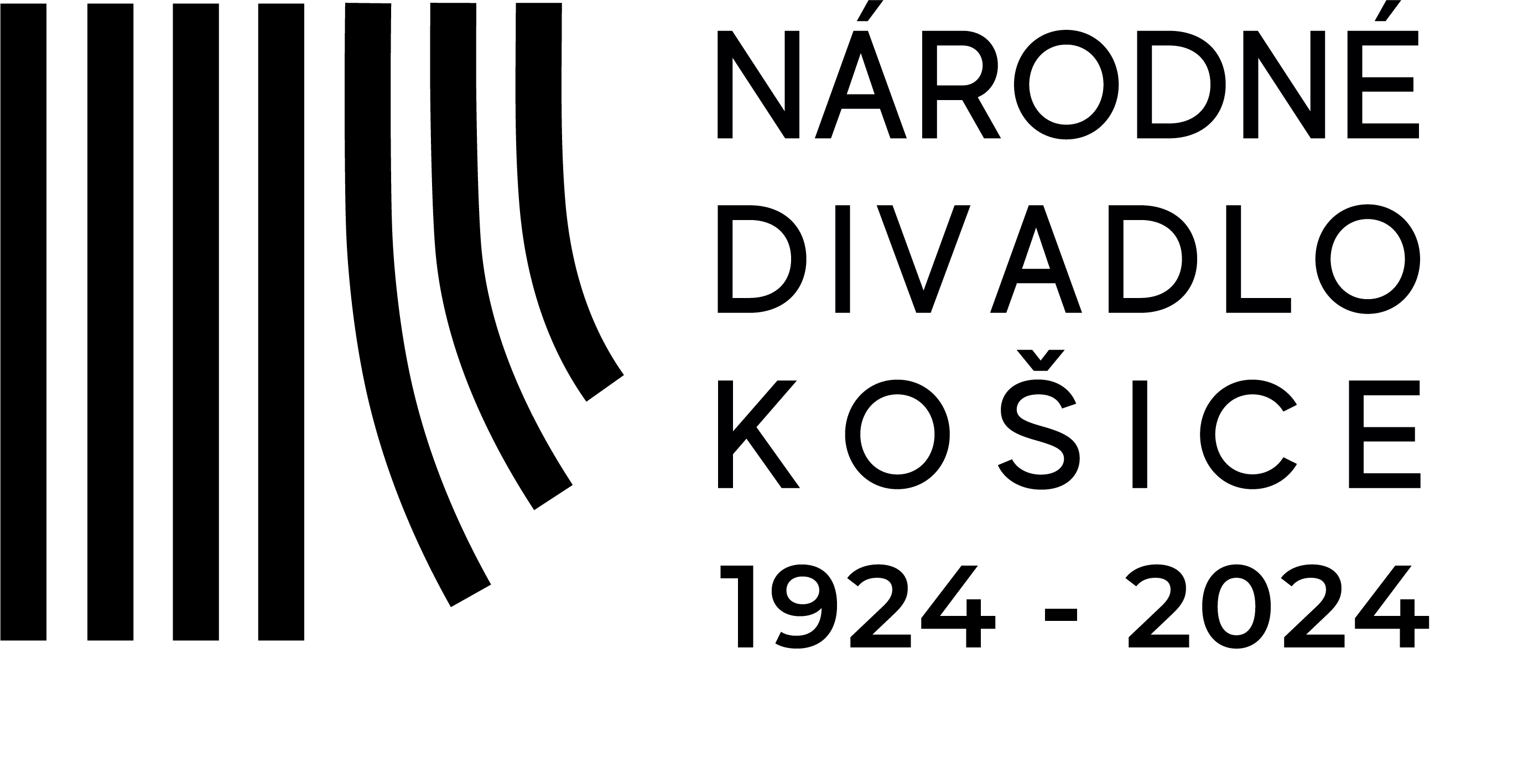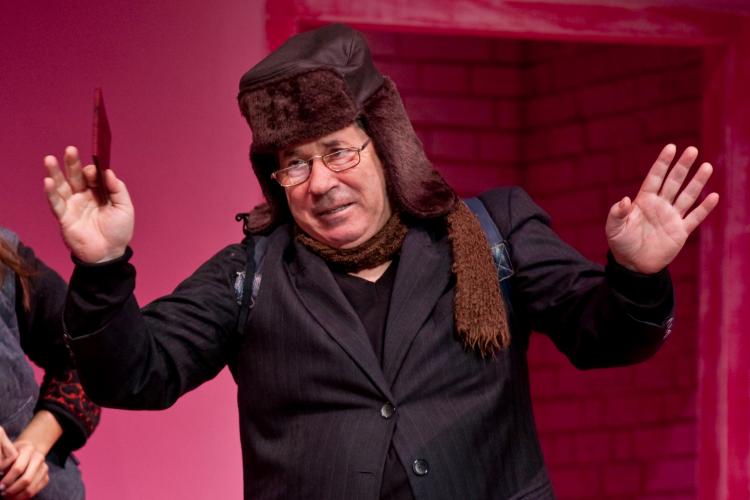Main theme of the drama „Marat/Sade“, premiering on Friday 4th November in historical building of the State Theatre Košice, is revolution, it´s progress and position of individual in a revolutionary movement, while central drama conflict represents contradiction between extreme individualism and idea of political and social upheaval. The director Vladimír Strnisko reveals how he perceives the famous play in interview with Lukáš Kopas, the dramaturgy lecturer of State Theatre Košice.
Is this theme universal? Or can Weiss´s drama text be staged only in certain socio-political contexts?
I don´t think so. It is the universal play, but it´s less and less about the revolution and more about the society returning again and again to some values – the values of primal beginning, because year 1789, the year of French Revolution, is kind of a founding year of European history. We have been living European history for over two hundred years, so since the French Revolution. Before that, the world was different and after the French revolution it was diametrically changed and we sort of still live in this world.
The Marat/Sade is conceived as a theatre within the theatre, or as a fictious performance about revolutionary events in France of 1793, studied by Marquis de Sade in 1808 together with other interned patients of a Charenton Asylum. Therefore, several timelines blend together in the play, while the author compiled its subject from the point of view of period context using innovative drama procedures. What theatrical tradition did Peter Weiss follow in his play and can this avant-garde piece communicate with modern audience?
It certainly can, because it is unusually comprehensive. As I said, we have lived the French Revolution for over two hundred years and all the ideas that are in it and that come from the French Revolution are still relevant. They keep repeating themselves and coming back to us. So the play is very actual. And when it comes to tradition, after the First World War, German theatre switched to expressionism, after all, the creative arts were already strongly expressionistic during the First World War. And in the theatre, Erwin Piscator started with expressionism together with Bertolt Brecht. Brecht´s first plays are strongly marked by this artistic direction. Weiss, as the author, strongly follows this direction and Brecht and also the German expressionist cabaret. It must be said, that when we talk about Piscator and Brecht, Weiss, compare to them, brought new trends in a sense that his work is a dialogue between collectivism and individualism. On the one hand was Marat, left-wing radical, on the other hand was Sade, intellectual and individualist. Brecht never used those two principles in his drama. He always used only one principle and dialectics. It must be said, that Weiss as a person that stands with left-wing opinion and collectivism, boldly confronted Sade as individualist. That means, he enriched Brecht and Piscator and it is a new look at drama and new look at the ideas shaped by expressionism – the ideas that have ruled Europe since the French Revolution, but especially since the end of First World War.
Suggestiveness of Marat/Sade lies not inly in its thematic, philosophical-political level, but also in authors choice of artistic ways. In the sense of Artaud´s total theatre, Weiss used theatrical features of folk theatre, fair songs, clown performances, pantomime or parody in his play. He also used several types of verses and above all he built a tension between the role and mental illness of patients, that they have to struggle with. What challenges does staging this type of artistic text bring for the director?
This type of artistic text is unusual. It was unusual even in the 60s, because i tis played in time shift. Marat´s murder took place in 1793, four years after the revolution, when the need to correct revolution kept coming back so it would win in its pure form. That is one very important thing. And the second important thing is, Weiss, for the first time, introduced Sade, controversial and well-known author, who represents individualist philosophy, or more precisely existing philosophy of 60s, where the features of existentialism were still strongly present. The fact that there is the time shift and that it takes place in 1808 about events of 1793 means, that it is the theatre within the theatre and that time shift is a tool of epic theatre. Plus, it´s set in the asylum – it´s played by mad people, meaning, it´s played by amateurs with certain mental diagnosis that come into the acting and the story itself. Therefore it is an unusual polyphonic play and in itself is unusually interesting for every director, for spectators, as well as for the actors portraying it.
Regarding the acting component of production, what does the director have to point out to his fellow actors when staging the Marat/Sade?
Above all, it´s the epic theatre. That means, the actor does not live through it. On the other hand, actors perform as crazy people – the inmates of Charenton institute and they also play actors that play crazy people. So there are many elements needed to be taken into account – what goes into the story and what goes into the result of art work. And that is very difficult, because there are features of folk theatre, features of expressionist cabaret, epic theatre, documentary theatre – shortly, it is the total theatre as far as theatre features are concerned.
During your long career, you have noty et directed at the State Theatre Košice. How do you cooperate with the drama ensemble?
I didn´t get to direct in Košice, although Košice is wonderful city as I´m getting to know it. As for the ensemble, some of them are my former listeners and others I didn´t know. I am very pleasantly surprised by hard work of the individual actors, their participation, that kind of already integrated collective of the drama ensemble, so it can be said, I am very surprised that I came to such a group and work well with.
You directed Marat/Sade in 2001 at the Slovak National Theatre. How will your production in Košice be different?
That is difficult to answer. The year 2001 was historically diametrically different from the current state of society. There were other problems then. Today, world has progressed to another phase of history, we probably will have a huge problem with. So we are on a threshold of very difficult situations, which are caused by economic crisis and evoking new ideas, that are closely related to the problems in Marat/Sade. Therefore, I think that the play is much more actual than it was then, but at the same time I think that there are features in it that resonated with society of that time, or more precisely with the phase of then society. What is said in the text, the revolution somehow failed again and again and was threatened with failure that stuck with us for thirty years. And this permanent failure, this permanent social collapse has settled down in our society to such an extent that I can no longer imagine any change that would bring something positive.






